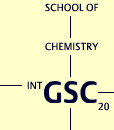 |


![]()
Name: Marlies Unterberg
Diploma / M.Sc degree: Westfälische Wilhelms-Universität Münster, Germany
(November 2010)
PhD Project: Epigenetic effects of arsenic species in human cells
Abstract of Research Project
Epigenetic is one of the most expanding fields in modern biomedical applied science. First mentioned by Conrad Weddington in the 1940s researches began to study the “physical code written over our genome’s DNA sequence” as in other words mitotically and/or meiotically heritable changes in gene expression that occur without a change in DNA sequence. Responsible for those alterations are reversible mechanisms including DNA methylation, posttranscriptional histone modification marks or gene silencing due to miRNAs. Disturbed DNA methylation pattern may lead to abnormal gene activities contributing to severe human diseases among others cancer and neurodegeneration.
Inorganic arsenic is a well documented, exposure relevant human carcinogen. Its toxic mode of action is still to be elucidated, especially since it is not directly genotoxic nor mutagenic. Recently epidemiological evidence has pointed towards an epigenetic mode of action. To further study epigenetic effects of inorganic arsenic and its human metabolites in human cells in my PhD work I will apply sensitive bioanalytical as well as biomolecular techniques.
Publications
M. Unterberg, L. Leffers, F. Hübner, H.-U. Humpf, K. Lepikhov, J. Walter, F. Ebert, T. Schwerdtle
Toxicity of arsenite and thio-DMAV after long-term (21 days) incubation of human urothelial cells: cytotoxicity, genotoxicity and epigenetics
Toxicol. Res. 3 (2014), 456–464.
C. Pieper, J. J. Marek, M. Unterberg, T. Schwerdtle, H.-J. Galla
Brain capillary pericytes contribute to the immune defense in response to cytokines or LPS in vitro
Brain Res. 1550 (2014), 1-8.
L. Leffers, M. Unterberg, M. Bartel, C. Hoppe, I. Pieper, J. Stertmann, F. Ebert, H.-U. Humpf, T. Schwerdtle
In vitro toxicological characterisation of the S-containing arsenic metabolites thio-dimethylarsinic acid and dimethylarsinic glutathione
Toxicology 305 (2013), 109-119.